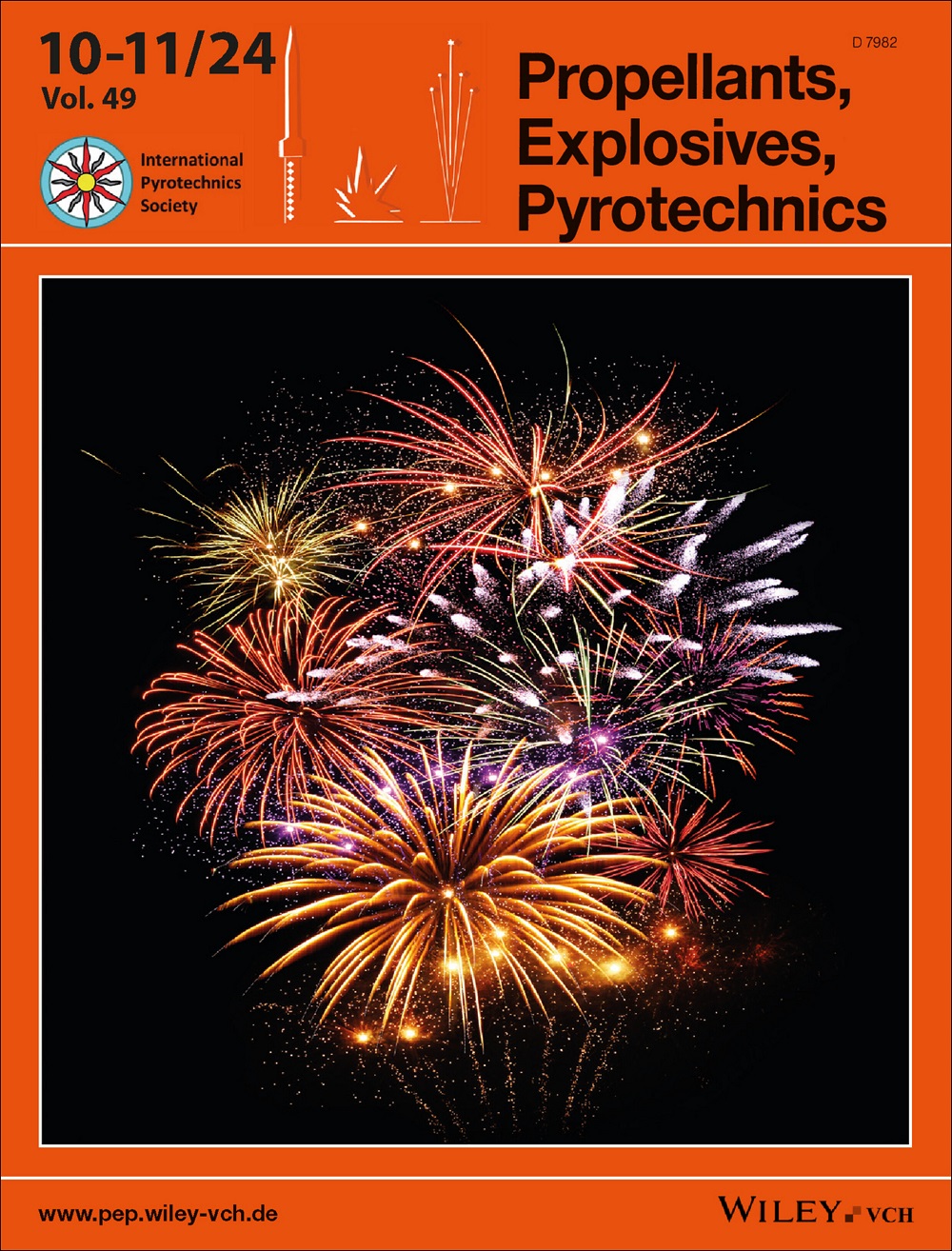Microencapsulation of ADN with HTPB‐based membrane in the presence of the bonding agents Tepan or Tepanol**
IF 2
4区 工程技术
Q3 CHEMISTRY, APPLIED
引用次数: 0
Abstract
Ammonium dinitramide (ADN) has appeared as a promising oxidizer for green propellants and thereby a potential substitute for ammonium perchlorate, largely in use in composite propellants for tactical and strategic long‐range missiles. The novelty lies in replacing ammonium perchlorate with a chlorine‐free oxidizer less harmful to the health and environment. However, ADN is hygroscopic and can potentially react with other chemical components, which could be overcome by microencapsulating the particles. The simple coacervation method was tested herein to microencapsulate ADN with a membrane made of hydroxyl‐terminated polybutadiene as pre‐polymer and methylene diphenyl diisocyanate as the curing agent. The effect of polyamine bonding agents on the capsule formation was tested by adding 0.5 or 2 % of Tepan or Tepanol, whose efficacy to bond to ADN was confirmed by detecting ammonia release through infrared spectroscopy. The capsule membrane was examined by optical and scanning electron microscopy. The dissolution time and rate were the parameters adopted to quantify permeability in a straight dissolution test in water, which demonstrated that 0.5 % Tepanol can provide the most effective protection. The infrared spectroscopy indicated that 60 °C temperature for prolonged periods, normally experienced by propellants, does not chemically affect the capsules’ membrane but can turn it lumpy. In conclusion, these polyamine bonding agents can assist the capsule formation over ADN particles using the simple coacervation method, however, their functionality on mechanical properties of propellants needs to be substantiated in forthcoming works as well as the effect of the concentration of bonding agents on propellant formulations.在粘合剂 Tepan 或 Tepanol 存在的情况下,用基于 HTPB 的膜对 ADN 进行微胶囊化**
二硝胺铵(ADN)是一种很有前途的绿色推进剂氧化剂,因此有可能替代高氯酸铵,高氯酸铵主要用于战术和战略远程导弹的复合推进剂。其新颖之处在于用一种对健康和环境危害较小的无氯氧化剂替代高氯酸铵。不过,ADN 具有吸湿性,有可能与其他化学成分发生反应,而微胶囊技术可以克服这一问题。本文测试了用羟基封端聚丁二烯作为预聚物、亚甲基二苯基二异氰酸酯作为固化剂制成的膜来微囊化 ADN 的简单共凝固方法。通过添加 0.5% 或 2% 的 Tepan 或 Tepanol,测试了多胺键合剂对胶囊形成的影响,并通过红外光谱检测氨的释放来证实其键合 ADN 的功效。用光学显微镜和扫描电子显微镜检查了胶囊膜。在水中直接溶解试验中,采用溶解时间和溶解速率作为量化渗透性的参数,结果表明 0.5 % 的 Tepanol 能提供最有效的保护。红外光谱分析结果表明,推进剂通常经历的 60 °C 温度不会对胶囊膜产生化学影响,但会使其结块。总之,使用简单的共凝方法,这些多胺键合剂可以帮助在 ADN 颗粒上形成胶囊,但它们对推进剂机械性能的作用以及键合剂浓度对推进剂配方的影响还需要在今后的工作中加以证实。
本文章由计算机程序翻译,如有差异,请以英文原文为准。
求助全文
约1分钟内获得全文
求助全文
来源期刊

Propellants, Explosives, Pyrotechnics
工程技术-工程:化工
CiteScore
4.20
自引率
16.70%
发文量
235
审稿时长
2.7 months
期刊介绍:
Propellants, Explosives, Pyrotechnics (PEP) is an international, peer-reviewed journal containing Full Papers, Short Communications, critical Reviews, as well as details of forthcoming meetings and book reviews concerned with the research, development and production in relation to propellants, explosives, and pyrotechnics for all applications. Being the official journal of the International Pyrotechnics Society, PEP is a vital medium and the state-of-the-art forum for the exchange of science and technology in energetic materials. PEP is published 12 times a year.
PEP is devoted to advancing the science, technology and engineering elements in the storage and manipulation of chemical energy, specifically in propellants, explosives and pyrotechnics. Articles should provide scientific context, articulate impact, and be generally applicable to the energetic materials and wider scientific community. PEP is not a defense journal and does not feature the weaponization of materials and related systems or include information that would aid in the development or utilization of improvised explosive systems, e.g., synthesis routes to terrorist explosives.
 求助内容:
求助内容: 应助结果提醒方式:
应助结果提醒方式:


